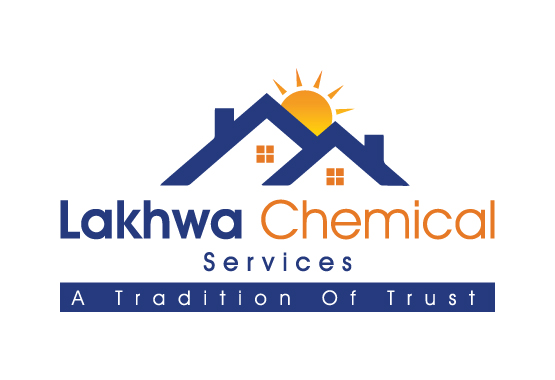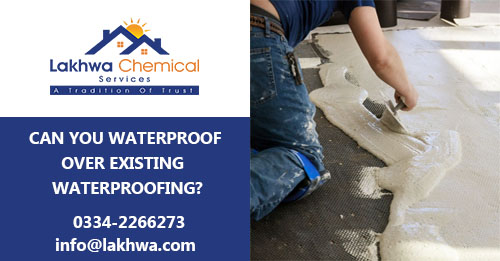Can you Waterproof over exiting Waterproofing?
Water intrusion is a persistent concern in the construction industry: It damages floors, roofs, and other surfaces with time. This problem is dealt with equal force by the waterproofing process, a durable cover that prevents structural degradation of buildings. Besides managing new surfaces, customers have concerns regarding existing ones. The question remains: Can you waterproof over them?
Let’s find out!
Feasibility & Benefits
In certain situations, waterproofing over existing water-proof surfaces can be a feasible and practical solution. However, it depends on factors, such as the condition of the existing waterproofing, the nature of the building, and the desired level of protection. Here are some potential benefits:
Cost Savings
Rather than removing and replacing an existing waterproofing system, overlaying it with a new one can result in significant cost savings. However, you need to ensure that the existing system is structurally sound, requires reinforcement, or added layers of protection.
Read More
Steps to Apply Damp Proof Paint for Internal Walls
Benefits of Using Acrylic Based Waterproofing for Your Home
Importance of Roof Waterproofing in Pakistan
Time Efficiency
Waterproofing over existing systems can expedite the process, as the need for extensive remedial work is minimized. This is beneficial for projects with tight timelines or where disruption needs to be minimized.
Enhanced Performance
Adding a new layer of waterproofing can enhance the overall performance and durability of the system, especially if the new layer utilizes advanced materials or technologies.
Considerations & Challenges
While the concept of waterproofing over existing systems holds promise, several considerations and challenges must be evaluated to ensure a successful outcome:
Assessment of Existing Waterproofing System
A thorough assessment of the condition of the existing waterproofing is essential. If the original system is damaged, deteriorated, or compromised in any way, overlaying may not provide effective protection. The new layer will only be as good as the foundation it’s applied on.
Compatibility
Compatibility between the existing and new waterproofing materials is crucial. Different materials might have chemical reactions or compatibility issues that lead to failure. Consulting with experts or conducting compatibility tests is advisable.
Read More
Why It’s Better to Rely on Roof Waterproofing Contractors in Pakistan?
Is Waterproofing Shower Walls and Floors Important for Every Home?
Is There Any Trick for Concrete Tank Waterproofing?
Adhesion
Proper adhesion between the existing and new waterproofing layers is vital. Surface preparation becomes critical to ensure the new layer bonds securely to the old one. If the existing surface is not adequately prepared, adhesion issues can arise, leading to delamination.
Thickness and Weight
Adding an additional waterproofing layer can increase the thickness and weight on the structure. It’s important to ensure that the building’s design and load-bearing capacity can accommodate the added load without causing any issues.
Drainage & Ventilation
Existing waterproofing systems can possess drainage and ventilation features compromised by overlaying. Ensuring proper drainage paths and ventilation channels is crucial to avoid trapping moisture between layers.
Durability
The durability of the new waterproofing layer should match or exceed that of the existing system. If the new layer deteriorates faster than the old one, it could lead to premature failure.
Warranty Considerations
Adding a new layer of waterproofing can affect warranties associated with the original system. Manufacturers’ guidelines and warranty terms should be carefully reviewed.
Professional Expertise
Waterproofing is a specialized field, and the decision to overlay existing systems should be made in consultation with experienced professionals.
Types of Waterproofing Overlays
Liquid Applied Membranes
Liquid Applied Membranes can be sprayed or rolled onto the existing surface, creating a new protective layer. These layers offer seamless coverage for a variety of surfaces.
Sheet Membranes
If the existing waterproofing is still sound, you might consider installing sheet membranes. This provides an additional layer of protection while addressing potential weaknesses.
Cementitious Overlays
Cementitious waterproofing systems can be applied over existing surfaces, providing a durable and versatile layer of protection. However, surface preparation is crucial to ensure adhesion.
Case-by-Case Approach
The feasibility of waterproofing over an existing waterproofing system is not a one-size-fits-all solution. Each situation is different, and decisions should be made based on a comprehensive evaluation, the structure’s condition, and the desired outcome. Consulting with waterproofing experts and engineers is essential to make informed decisions and ensure the longevity and effectiveness of the waterproofing solution.
Conclusion
Waterproofing over an existing water-resistant system can be a viable option. It offers potential benefits such as cost savings, time efficiency, and enhanced performance. However, challenges such as compatibility, adhesion, drainage, and structural considerations must be carefully addressed.
Contact Lakhwa Chemical Services for a seamless waterproofing system.




Leave a Reply
Want to join the discussion?Feel free to contribute!